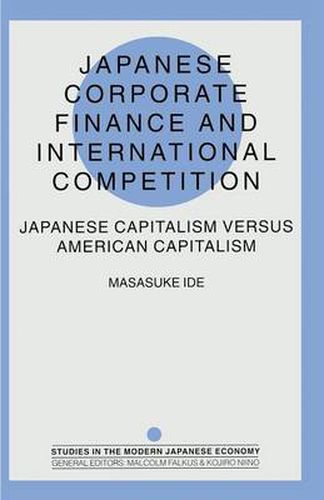Readings Newsletter
Become a Readings Member to make your shopping experience even easier.
Sign in or sign up for free!
You’re not far away from qualifying for FREE standard shipping within Australia
You’ve qualified for FREE standard shipping within Australia
The cart is loading…






This title is printed to order. This book may have been self-published. If so, we cannot guarantee the quality of the content. In the main most books will have gone through the editing process however some may not. We therefore suggest that you be aware of this before ordering this book. If in doubt check either the author or publisher’s details as we are unable to accept any returns unless they are faulty. Please contact us if you have any questions.
In this book, the author describes that the relationship based shareholding was the hidden key factor to explain Japan’s miraculous economic success after WWII. The stock market which valued the low profitability Japanese companies highly enabled them to provide ‘better and cheaper’ manufactured goods in the export markets, leading resource poor Japan to a leading exporter and economic and financial superpower. The book also casts critical eyes to the weakness of the traditional Japanese financial system as a catch-up model, in comparison with the open US system.
$9.00 standard shipping within Australia
FREE standard shipping within Australia for orders over $100.00
Express & International shipping calculated at checkout
This title is printed to order. This book may have been self-published. If so, we cannot guarantee the quality of the content. In the main most books will have gone through the editing process however some may not. We therefore suggest that you be aware of this before ordering this book. If in doubt check either the author or publisher’s details as we are unable to accept any returns unless they are faulty. Please contact us if you have any questions.
In this book, the author describes that the relationship based shareholding was the hidden key factor to explain Japan’s miraculous economic success after WWII. The stock market which valued the low profitability Japanese companies highly enabled them to provide ‘better and cheaper’ manufactured goods in the export markets, leading resource poor Japan to a leading exporter and economic and financial superpower. The book also casts critical eyes to the weakness of the traditional Japanese financial system as a catch-up model, in comparison with the open US system.